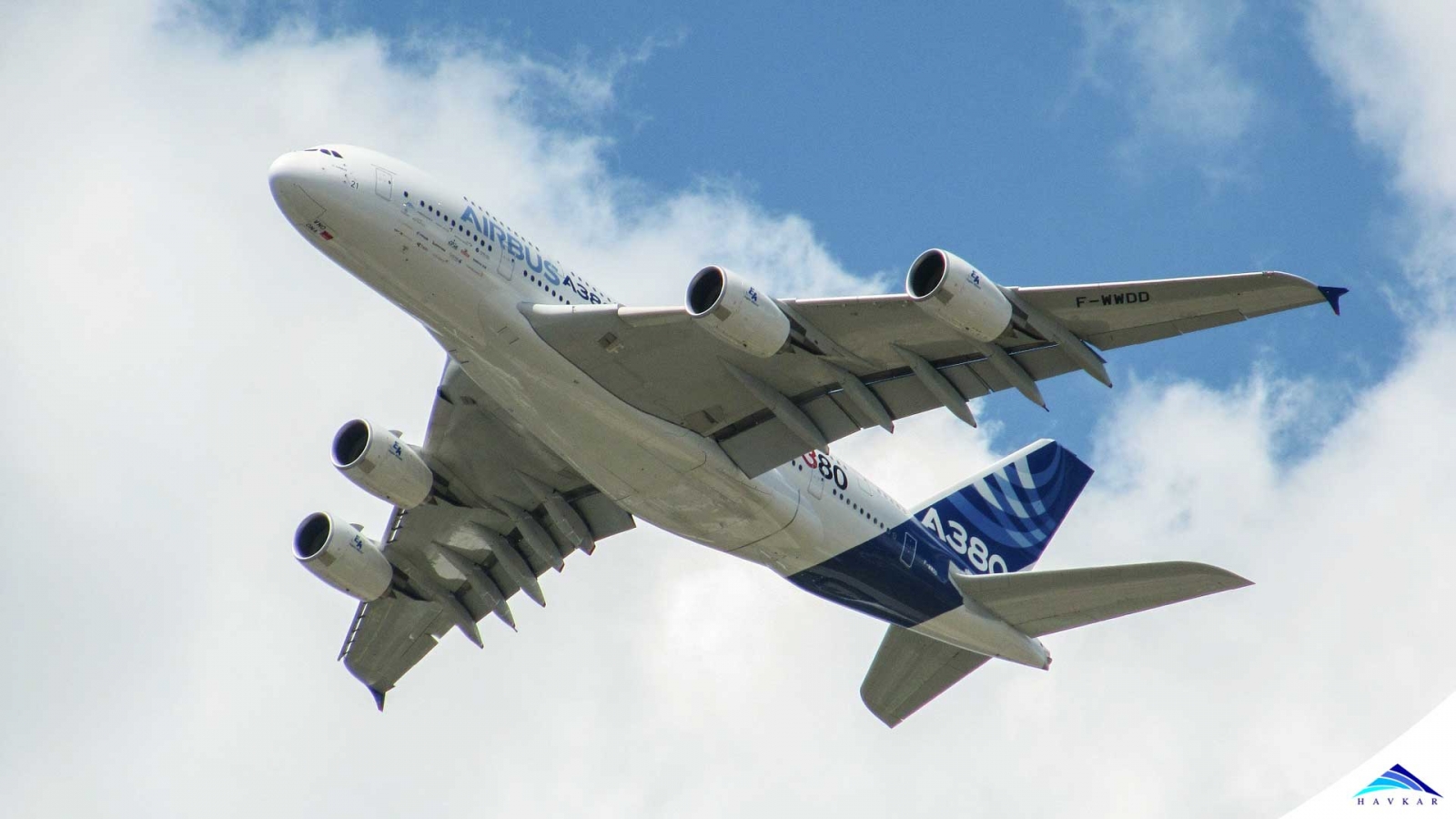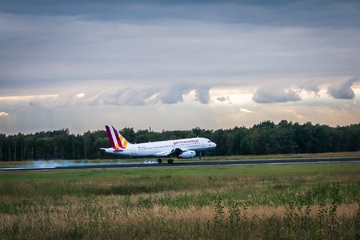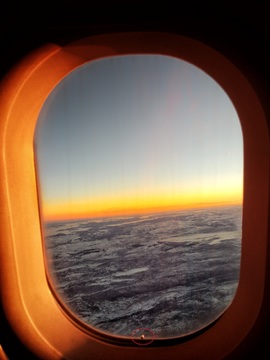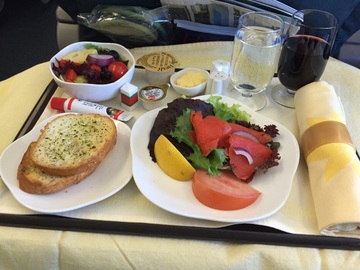
2. There is no Safe seat in an aircraft. Although statistics indicate the rear seats are the safest, the survival rate is sorely pegged on circumstances prior to the crash. One fact is certain; crashes are very rare, the odds being 1 to 1.2 million compared to 1 to 5000 in road-related incidents.
3. A nap is commonplace to flight crews. Luxurious lofts confined behind the cockpit, just over-head the passenger compartment grants the pilot and flight attendants the privilege to sleep during long-haul flights. One of the pilots has to be on the control at all times. The rest assures less fatigue and crew optimal output.
4. Aircraft tires are designed to take heavy loads. With an airplane weighing more than 100 tonnes and landing speeds of 160 miles per hour, a blowout is expected but rarely happens. The smoke witnessed upon landing is generated from tires as they skid before they attain rotational velocity, uniform to that of the plane runway speed.

5. The primary reason cabin lights get dimmed is actually to get the passengers’ eyes accustomed to low-light conditions, hence adjust swiftly to darkness in case of a landing or takeoff mishap. Consequently, Flight attendants will occasionally request passengers to raise the window shades during descent to let in natural light as a precaution in case lights are cut-out.
6. Airplanes can after all fly with one engine. Twin engine aircraft are designed to proceed with normal flight, even after one of the engines gives in.
7. Smoking is not permitted, but ashtrays are installed in lavatories. The ban on smoking has been in force since 1990, but defiant passengers will yield into the urge to light a cigarette, hence ashtrays are necessary for the disposal of the butt without creating a fire risk.
8. Hole in the aircraft window? Oh, it’s a bleed hole. Three acrylic panes are mated together to form a typical airplane window, the hole guarantees air pressure from the pressurized cabin is only applied to the outer pane which is ideally designed to take the punch.

9. The bad reputation with airplane food has nothing to do with its preparation. The humidity-free air and change in air pressure wreaks havoc to your taste buds and hence the blandness.

10. In the unlikely event the airplane loses cabin pressure, The flight crew will deploy oxygen masks to prevent cases of hypoxia(lack of oxygen in the blood).Unfortunately, the oxygen lasts for only 15 minutes, nevertheless, it's enough time for the pilot to commence an emergency rapid descent to an altitude lower than 10,000 Ft.

11. The white trails left by jet airplanes are neither smoke nor Chemtrails. The jet engine burns hydrocarbon kerosene fuel producing various emissions, one of them is water vapor. The low-pressure and temperature at high altitude condenses this water vapor into trails of clouds.
12. The bent section of the wing tip is called a winglet. During the flight, it reduces wingtip vortices -turbulence developed by the convergence of varying air pressures from both the top and lower surfaces of the wing. This aids in reducing drag and improving the aerodynamic performance of the wing.
13. A visit to the lavatory is restricted during takeoff and landing as a precaution, after all, these are the most dangerous phases of flight and the absence of safety features (seatbelts) in the toilet means, of course, you have nothing to hold on to.
14. Airplane mode, please! This is obviously the most contentious subject ever, pitting industry stakeholders against aviation authorities. The use of the phone onboard will not cause a crash. Modern planes have state-of-the-art technology that shields cockpit instruments from electronic interference and terrestrial mobile phone networks from network congestion. That noted, F.A.A still prohibits cell phone communication, a directive justified by the Federal Communication Commission (FCC)
15. Reason for the varying flight time? Jetstream. These are pockets of westerly winds blowing in the upper atmosphere, triggering alters to the flight time from and to the same city or town. Westbound flights take a long time since you fly into a headwind.
16. Updrafts and turbulence cause uncontrollable shaking and violent bumpy flight. Turbulence is caused by rapidly turning conventional air, wind shear or currents from other aircrafts. The phenomenon of warm and moist air rising during a thunderstorm degenerate into an updraft. An updraft is more devastating than turbulence and as a matter of fact the cause of injuries to passengers. Pilot monitors onboard weather radar and patterns to initiate the appropriate route devoid of thunderstorms. Booking a night or morning flight or grabbing a seat directly over the wing will guarantee a smooth flight.
17. Aircrafts take off with just enough fuel loads to get them safely to their next destinations. Flying with full tanks means added weight hence less economical.
18. Pilots are served different kinds of meals. It’s a measure by airlines to curb any unexpected event of food poisoning as a flight safety hazard.
19. Landing and take-off are the most dangerous phases of flight. Nearly 40% of recorded fatal accidents occurred during the final approach. Takeoff accounted for 13% of these incidents.
20. English has long been universally accepted and mandated as the language of aviation. All flight crews and Air Traffic Controllers are required to be proficient and fluent in English as per ICAO standards.
21. The sophisticated Autopilot relies on complex onboard systems data to automatically steer the plane to the set flight destination. However, much reassuring the technology is, the pilot is required to be “hands-on” during landing and takeoff.
22. Stowaways (boarding aircrafts without authorization) incidents occur once in a while. The thought of a sane person hiding inside a Jumbo jet wheel well and earning a free ticket ride sounds thrilling, but sadly most of these daredevil antics end tragically. Nearly 76% of stowaways never live to tell their harrowing experience.
23. Smuggling banned merchandise continues to be a dilemma notwithstanding the stringent airport checks. From drugs to precious metals and guess what, even wild animals, weapons and human body parts makes it on the list.
24. The busiest airport based on passenger traffic is Hartsfield-Jackson Atlanta International Airport. It handles more than 104 million passengers annually.
25. However, much jet lag and motion sickness are overwhelming to a traveler, with proper planning they can be alleviated. Seating near the window to explore the horizon, lying on your back or taking anti-motion sickness drugs, has proved to deal with air sickness. Momentarily getting up, walking in the cabin if possible and taking plenty of hydrating alcohol- free fluids will ease the effects of jet lag.
26. The Airbus A380 is the largest passenger aircraft. It holds roughly 850 economy passengers, weighs a whopping 575 tonnes and costs a staggering $420 million dollars.

27. The first supersonic passenger commercial aircraft was Concorde. It could cruise at speeds of Mach 2 with a sitting capacity of 128 passengers. The last one to fly was in 2003 after what was claimed to be low passenger demand following a Concorde plane crash on 25th July 2000.

28. General Electric GE90 series is the largest and powerful turbofan engine powering a commercial aircraft today. Unit cost being $27 million. In addition, it generates 115,000 pounds of thrust enough to power 1500 SUVs. A single composite blade of this massive engine is enough to bag a compact luxury car.
29. For an aircraft to be certified by aviation authorities it must comply with a minimum 90 minute emergency evacuation mock drill.
30. Booking a ticket a month in advance and opting for a budget airline can be fairly cheap.